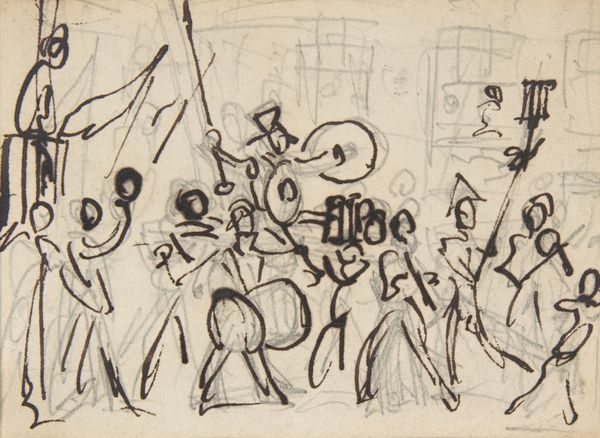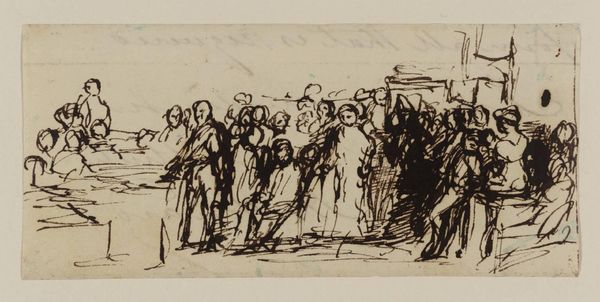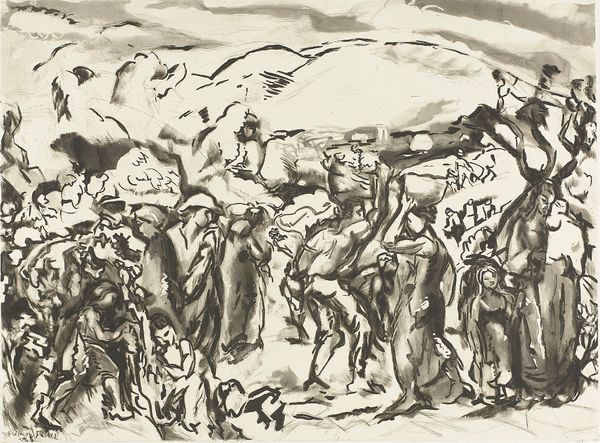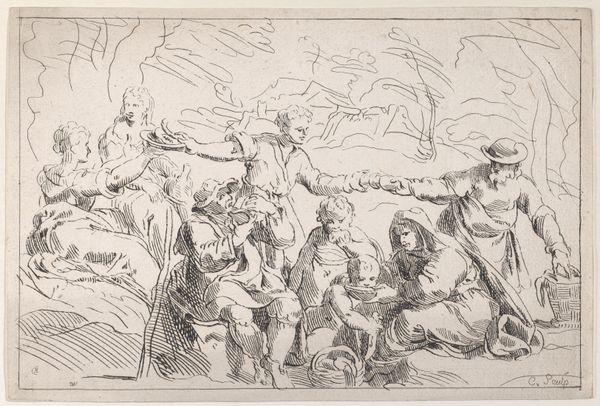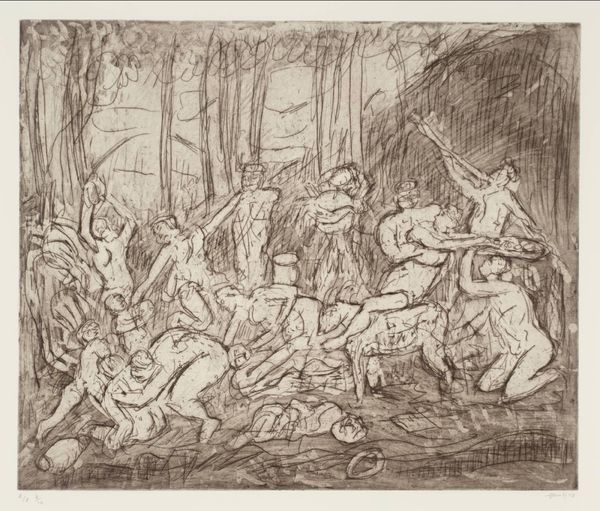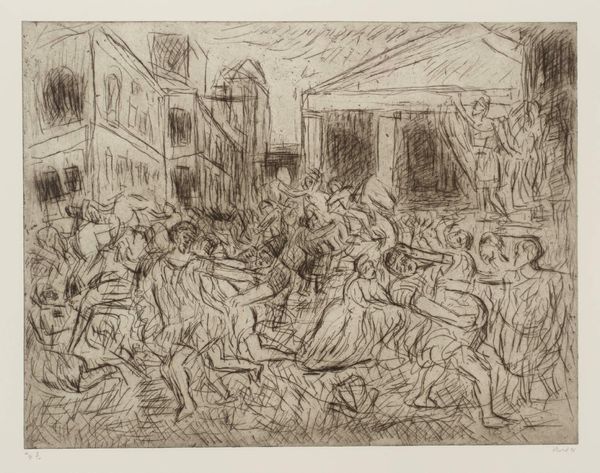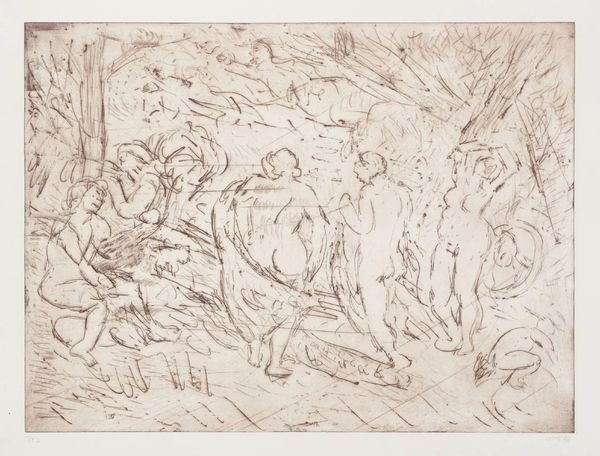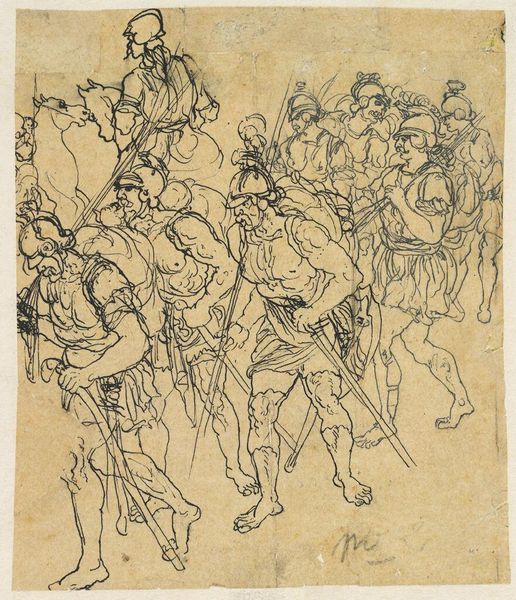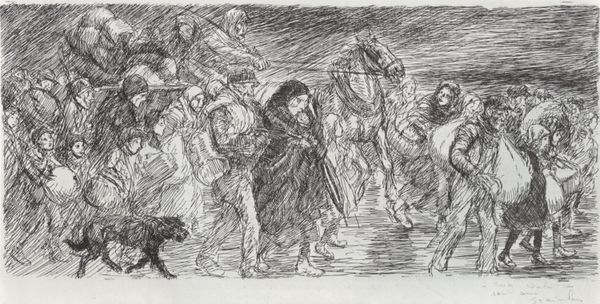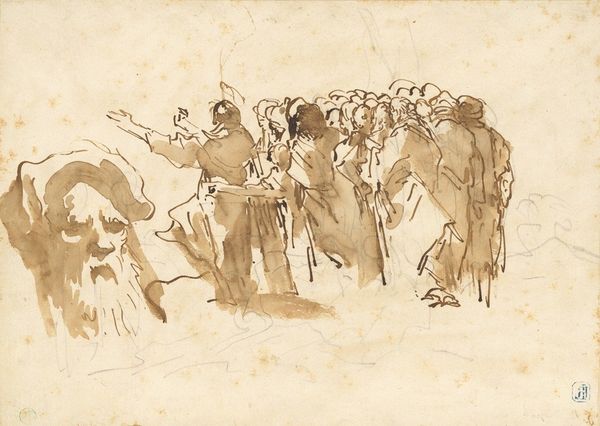
Dimensions: 18 x 27 cm
Copyright: Public domain
Curator: Today, we're looking at Alfred Dehodencq's "Study for the Arrest of Charlotte Corday," an ink and pen drawing from 1853. Editor: What immediately strikes me is the sheer dynamism; it’s a frenzied scene. The lines are so energetic, capturing this pivotal moment in stark and hurried fashion. It evokes a feeling of intense chaos and upheaval. Curator: Indeed. Dehodencq created this as preparation for a larger history painting depicting Corday's arrest after she assassinated Jean-Paul Marat, a Jacobin leader, during the French Revolution. You see this sort of charged atmosphere so prevalent in the 19th century's rendering of defining political and revolutionary scenes. Editor: Absolutely, and the composition emphasizes this unrest. The claustrophobic clustering of figures—seemingly both enraged citizens and arresting officers—around a central, obscured figure evokes a sense of confinement, of being caught in the swell of history. I find myself wondering what Corday's motivations truly were. A politically motivated act of violence committed by a woman during the Revolution challenges so many assumptions about female agency and power, and raises a lot of very discomforting realities about systemic inequality and desperation. Curator: It's interesting to note how Dehodencq employs the medium itself to amplify the drama. The raw, sketch-like quality— the visible pen strokes—lend a sense of immediacy to the scene, almost as if we're witnessing history unfold in real time. Consider the role images like this played in shaping public perception of the revolution itself. Were Corday's actions deemed heroic, or villainous? These were often visually driven and debated questions. Editor: It also reflects back on our own historical moment, doesn’t it? How are acts of violence, especially when carried out by women who’ve been forced into desperate situations by society, interpreted, sensationalized, or dismissed? It's easy to see connections between these charged historical events and our own troubled present. Curator: Exactly. What was intended as a study for one grand narrative inadvertently evolved into a powerful document in its own right. Editor: Well, I'm left pondering the legacies of revolution and resistance, and whose stories get told, and how they’re framed. The piece also serves as a haunting reminder of the complexities of historical narrative and female agency.
Comments
No comments
Be the first to comment and join the conversation on the ultimate creative platform.

